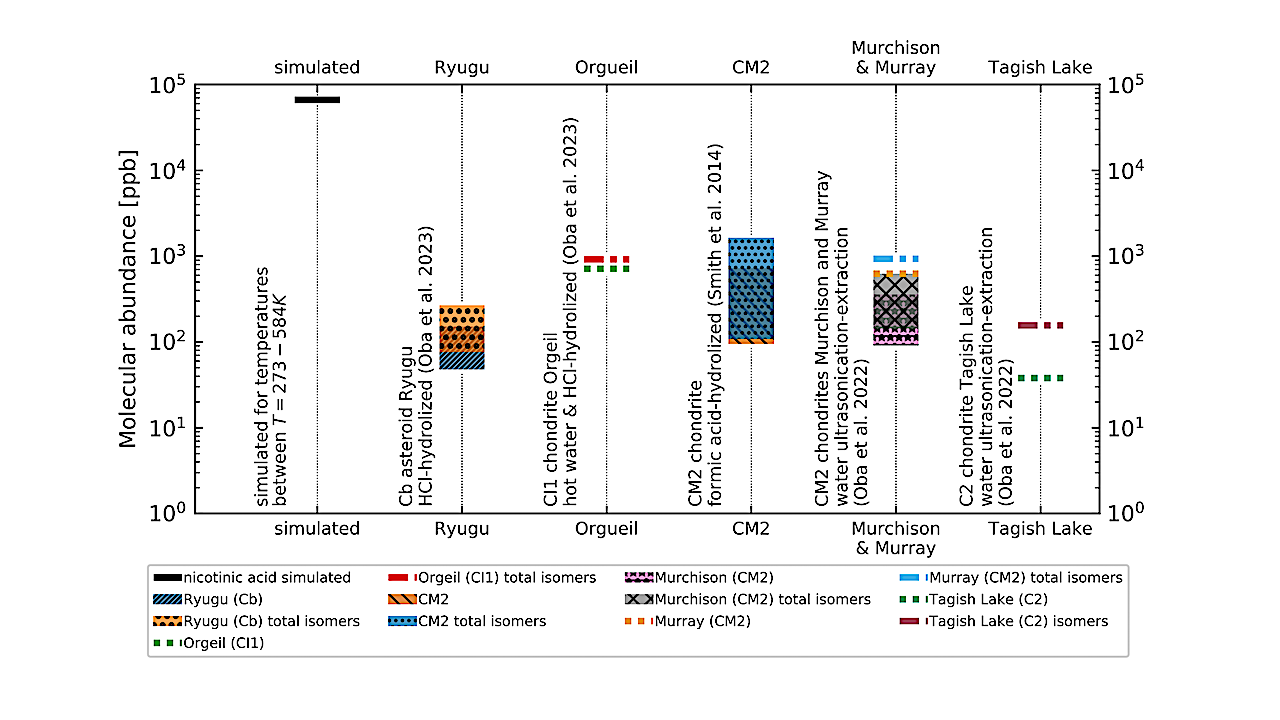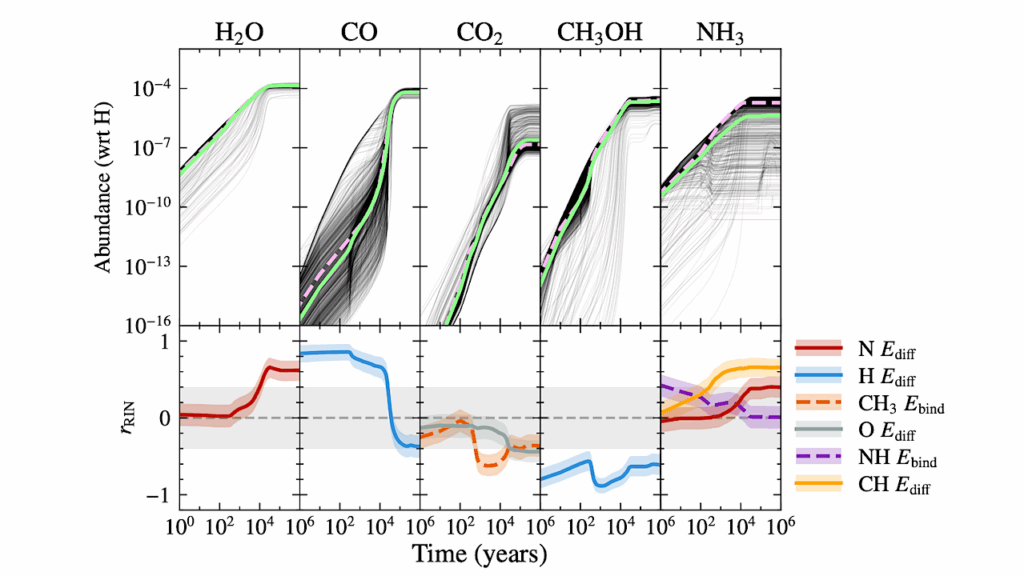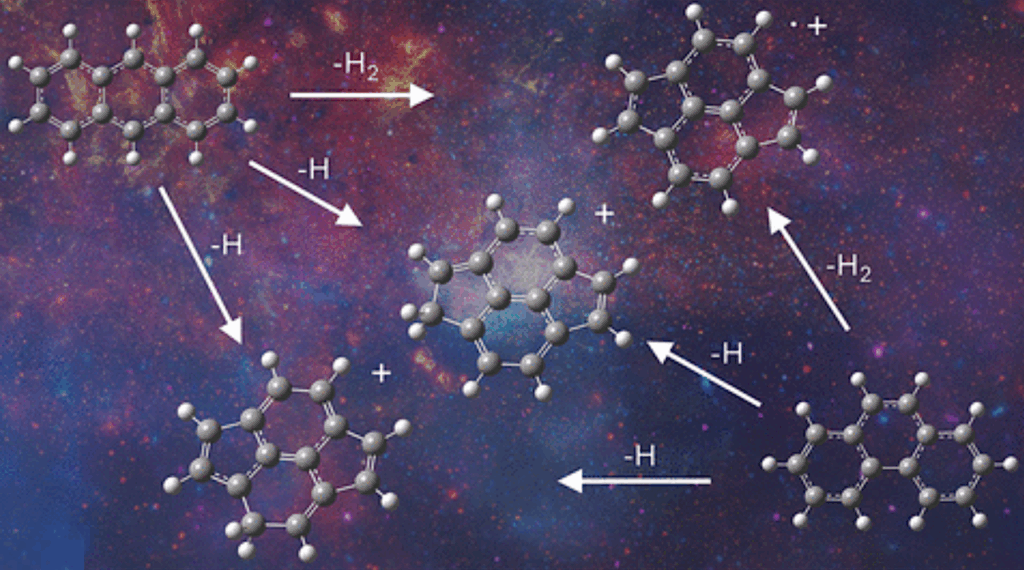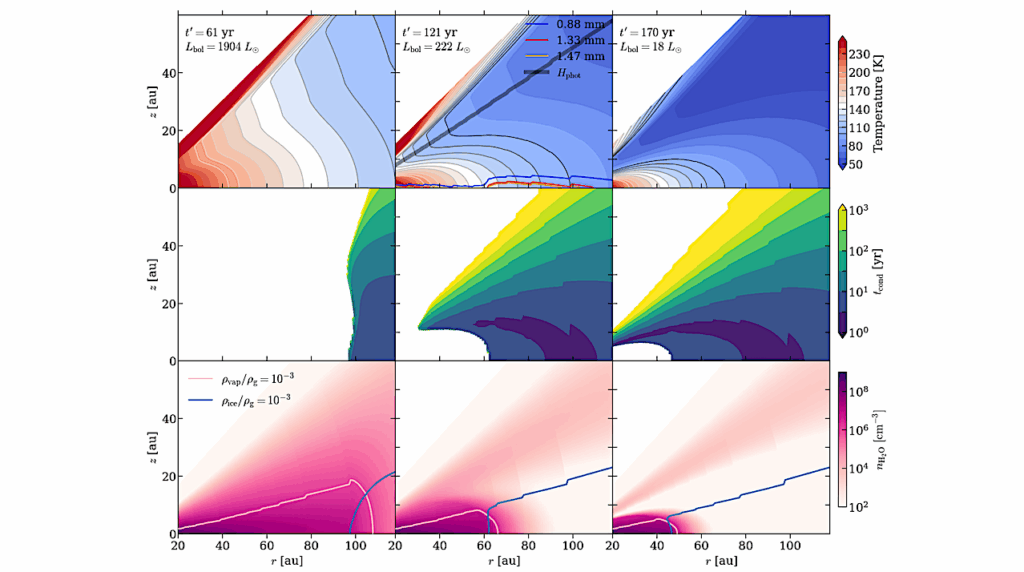Prebiotic Vitamin B3 Synthesis In Carbonaceous Planetesimals

Aqueous chemistry within carbonaceous planetesimals is promising for synthesizing prebiotic organic matter essential to all life.
Meteorites derived from these planetesimals delivered these life building blocks to the early Earth, potentially facilitating the origins of life.
Here, we studied the formation of vitamin B3 as it is an important precursor of the coenzyme NAD(P)(H), which is essential for the metabolism of all life as we know it. We propose a new reaction mechanism based on known experiments in the literature that explains the synthesis of vitamin B3.
It combines the sugar precursors glyceraldehyde or dihydroxyacetone with the amino acids aspartic acid or asparagine in aqueous solution without oxygen or other oxidizing agents. We performed thermochemical equilibrium calculations to test the thermodynamic favorability. The predicted vitamin B3 abundances resulting from this new pathway were compared with measured values in asteroids and meteorites.
We conclude that competition for reactants and decomposition by hydrolysis are necessary to explain the prebiotic content of meteorites. In sum, our model fits well into the complex network of chemical pathways active in this environment.
Klaus Paschek, Mijin Lee, Dmitry A. Semenov, Thomas K. Henning
Comments: Accepted for publication in ChemPlusChem. The authors Klaus Paschek and Mijin Lee contributed equally. 18 pages, 7 figures (all colored). Supporting Information is available at this https URL
Subjects: Earth and Planetary Astrophysics (astro-ph.EP); Chemical Physics (physics.chem-ph)
Cite as: arXiv:2310.11433 [astro-ph.EP] (or arXiv:2310.11433v1 [astro-ph.EP] for this version)
https://doi.org/10.48550/arXiv.2310.11433
Focus to learn more
Journal reference: ChemPlusChem 2023, e202300508
Related DOI:
https://doi.org/10.1002/cplu.202300508
Focus to learn more
Submission history
From: Klaus Paschek
[v1] Tue, 17 Oct 2023 17:42:52 UTC (4,338 KB)
https://arxiv.org/abs/2310.11433
Astrobiology, Astrochemistry








